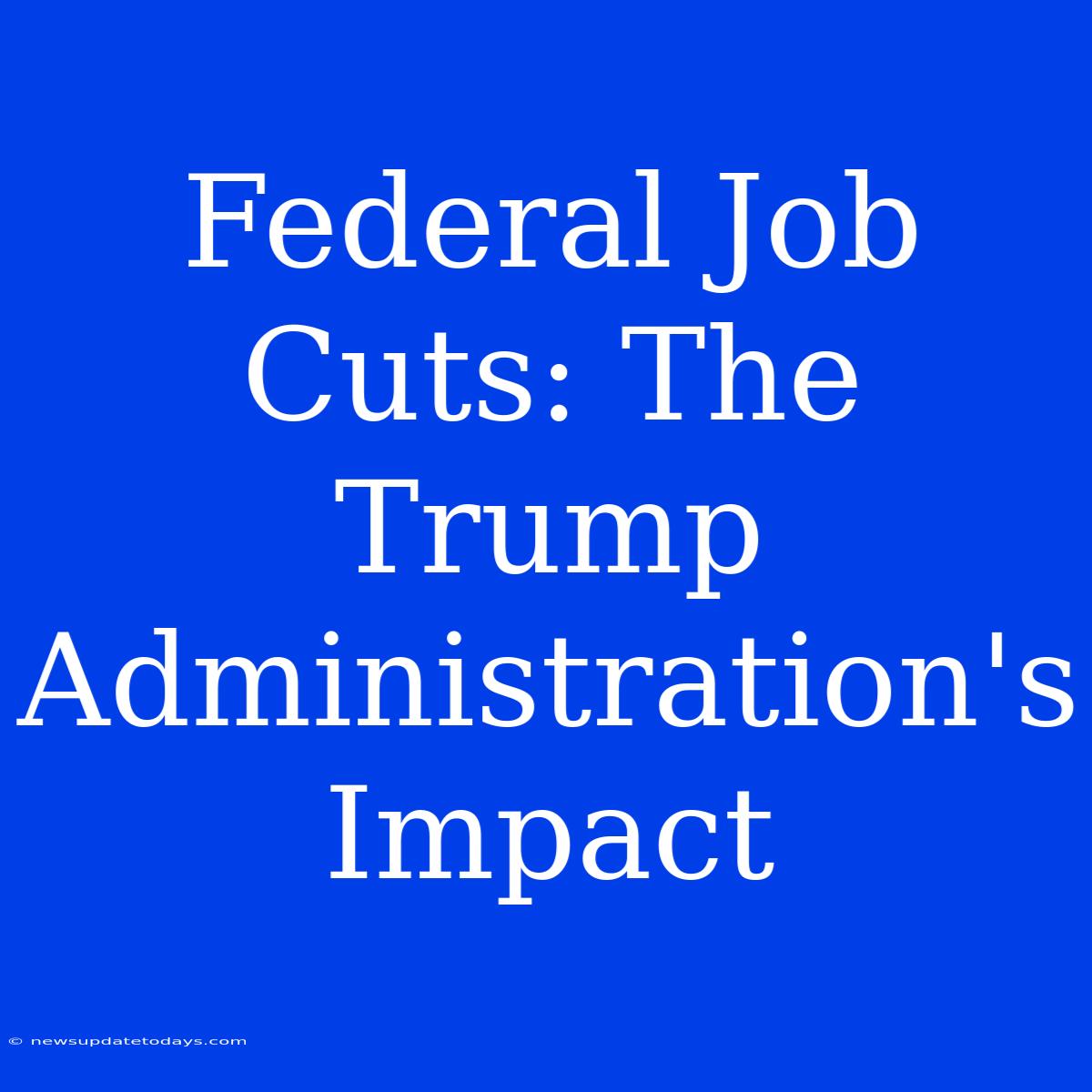Federal Job Cuts: Assessing the Trump Administration's Impact
The Trump administration's impact on federal employment is a complex issue, sparking considerable debate and analysis. While campaign promises hinted at streamlining the bureaucracy and reducing the size of government, the actual effects were multifaceted and varied across different agencies and sectors. This article delves into the specifics, examining both the cuts implemented and the broader consequences for the federal workforce and the American public.
The Numbers: Job Losses and Agency Restructuring
Precise figures on job cuts during the Trump presidency are difficult to pinpoint definitively. Simple headcount reductions don't fully capture the picture. The administration employed strategies including hiring freezes, attrition (allowing vacancies to remain unfilled), and agency restructuring, making a direct comparison with previous administrations challenging.
While some agencies saw significant staff reductions, others experienced minimal change or even slight increases in certain areas. The impact was not uniform across the federal government. For instance, some argue that cuts disproportionately affected environmental protection and regulatory agencies, impacting their ability to enforce environmental regulations and consumer safety standards.
Beyond Headcount: Shifting Priorities and Policy Changes
Analyzing the Trump administration's impact requires looking beyond simple numerical job losses. The administration actively shifted priorities, leading to changes in agency budgets and staffing levels. This reallocation of resources profoundly affected the government's ability to address specific policy goals.
For example, increased funding for border security and immigration enforcement meant a corresponding shift in personnel and resources. Conversely, other agencies focused on social programs and environmental protection might have experienced cuts, potentially impacting their effectiveness.
Long-Term Consequences and the Broader Context
The long-term consequences of these employment shifts remain to be fully assessed. Some argue that reduced staffing in critical agencies has undermined essential government functions, affecting public services and overall efficiency. Others maintain that streamlining and restructuring were necessary to improve efficiency and reduce wasteful spending.
Furthermore, understanding the context is crucial. The Trump administration's approach to federal employment occurred within a broader political and economic environment, including factors like changing technological advancements and evolving public expectations of government.
Key Questions for Further Analysis
Several key questions remain unanswered and require further investigation:
- What was the actual impact on service delivery? Did reduced staffing lead to slower processing times, reduced service quality, or increased wait times for citizens relying on federal programs?
- How did the cuts affect morale within the federal workforce? Did decreased staffing and uncertainty create an environment of stress and uncertainty among federal employees?
- What were the long-term fiscal implications? Did the job cuts lead to anticipated cost savings, or were they offset by increased inefficiencies or other unintended consequences?
- How did the changes in staffing affect policy outcomes? Were specific policy goals achieved or hindered by the personnel changes?
In conclusion, the Trump administration's impact on federal employment is a complex issue requiring nuanced analysis. While headlines often focused on headline numbers, a more in-depth examination considers the shifting priorities, budgetary decisions, and agency restructuring that shaped the federal workforce during this period. Future research should delve deeper into these multifaceted aspects to achieve a more complete understanding of the consequences.

